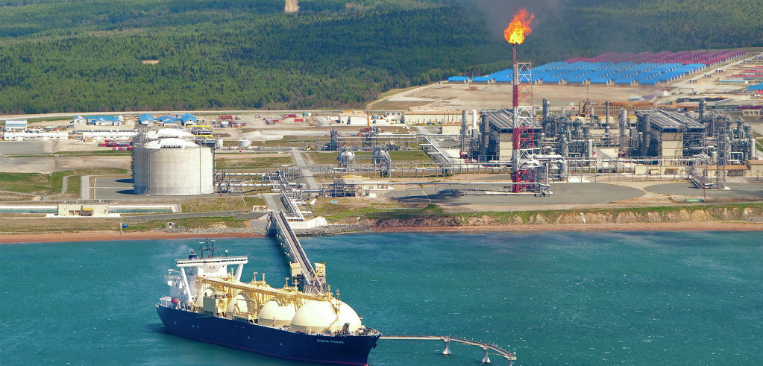Will Japan receive Russian pipeline gas?

Sakhalin-2 LNG plant. Source: Press photo
Tokyo Gas would like to build a gas pipeline from Sakhalin to the central part of Japan, Shigeru Muraki, a consultant with Japan's largest gas company said at the at the third annual Russian–Japanese Forum on Cooperation in Business, Technology and Culture in Tokyo.
Muraki said the 1500-kilometer long pipeline would cost $3.5 billion, adding that pipeline gas would cost half as much as the liquefied natural gas (LNG) that Japan imports from Russia at the moment.
LNG monopoly
Japan is the largest importer of Russian liquefied gas. In 2014, Japan bought 80 percent of the LNG produced on Russia's only liquefied gas plant (the Sakhalin-2 project).
However, LNG is significantly more expensive than pipeline gas.
Last year, supplies of Russian LNG cost an average of $788 per ton ($579 per 1,000 cubic meters). In comparison, Gazprom's average pipeline supplies to Europe cost $350-380 per 1,000 cubic meters.
"In February 2015, while oil prices were declining, the price of liquefied gas already fell to $614 per ton ($451 per 1,000 cubic meters)," says Sergei Agibalov, Deputy Director of the Economic Department at the Institute of Energy and Finance.
Agibalov estimates that, even while considering the costs of the pipeline's construction and Gazprom's unwillingness to lose revenue, the pipeline gas supplied to Japan would cost less than $400 per 1,000 cubic meters.
Easy to propose, difficult to build
The Japanese had begun talking about constructing a pipeline along the seabed of the Sea of Japan back in 2014. At that time, though, they were talking about a pipeline from Sakhalin to the island of Hokkaido.
However, the construction of a submarine pipeline presents serious risks. “This is a seismically dangerous region,” explains leading expert at the Russian Union of Oil and Gas Industrialists Rustam Tankaev. “All the studies done on building a pipeline to Japan resulted in negative conclusions.”
Tankaev believes that there isn’t reliable technology to construct submarine pipelines in seismically active regions.
Earlier the Japanese said that modern technology does permit such construction. As an example they cited the technology that had been used successfully for constructing submarine tunnels between the Japanese islands.
But seismic activity is not the only impediment. Deputy Director of the National Energy Security Foundation Alexei Grivach says that Japan lacks a single gas supply system.
“The Japanese market is built on local segments, which are not connected,” explains Grivach. “Moreover, many terminals receiving LNG are scattered all over the islands.”
Does Russia need a pipeline to Japan?
Gazprom declined to comment, but Vice President of the Argus Agency Vyacheslav Mischenko said the Russian gas giant is not particularly attracted to the idea of constructing a gas pipeline to Japan. The pipeline ties the seller to the buyer, while supplying LNG by ships is a more flexible approach. “The idea is more attractive from a strategic or geopolitical viewpoint,” says Mischenko. “By using ships Gazprom can change the direction of the supplies, something that cannot be done when there is a pipeline.”
On the other hand, LNG projects in Russia are currently experiencing certain difficulties.
Sergei Agibalov points out that due to the sanctions, which limit Russian companies' access to western capital and technology markets, the introduction of new LNG power capacities (for example, Gazprom plans to build a factory in Vladivostok) can temporarily be postponed. This is why pipeline projects are becoming more realistic.
Based on article first published in Russian by Gazeta.ru.
All rights reserved by Rossiyskaya Gazeta.
Subscribe
to our newsletter!
Get the week's best stories straight to your inbox
